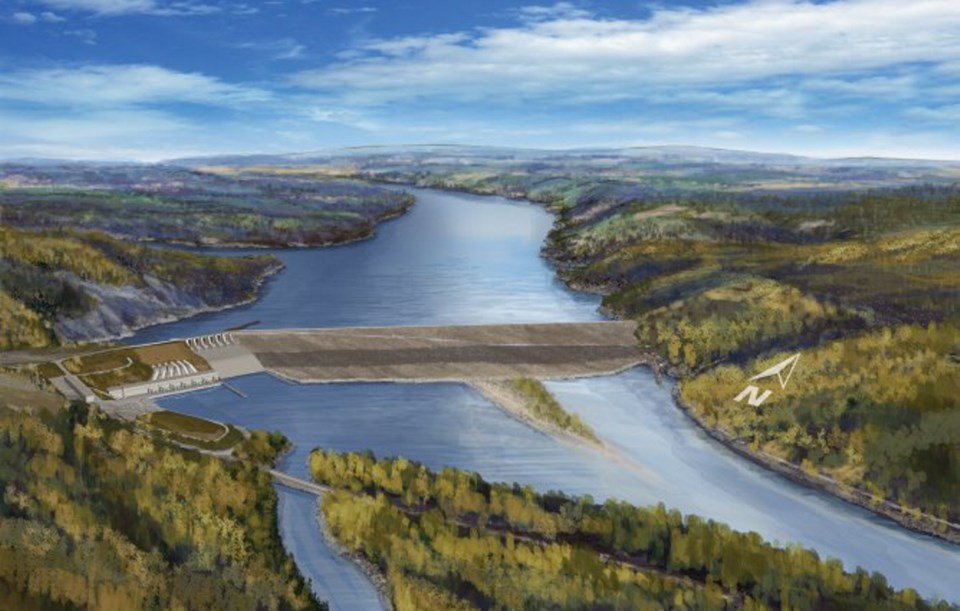 Thought we had Premier John Horgan cornered this week. After the B.C. Utilities Commission poured a fair amount of doubt on the economics of the Site C dam on the Peace River, he was asked what he thought.
Thought we had Premier John Horgan cornered this week. After the B.C. Utilities Commission poured a fair amount of doubt on the economics of the Site C dam on the Peace River, he was asked what he thought.
“The report speaks for itself.”
OK. The headline writes itself: “Horgan confirms dam is dead.”
But when something like that was suggested to him, he denied it: “No.”
OK, flip it. How about: “Horgan denies dam will be halted”?
That’s not quite right, either. The government’s current position is more a frustrated sense of unease over the circumstances that led to the report, coupled with acute anxiety about the enormity of the decision to be made in the next 57 days.
It’s so bad that Horgan says he can’t take any comfort in using that most satisfying of phrases: “I told you so.”
Years of warnings about the danger of starting work without running the project past the independent utilities commission flocked home to roost this week. After B.C. Hydro has spent $2 billion on the project, the commission has spread a layer of professional skepticism over whether it’s worth continuing the work.
Horgan noted some of the central findings: The dam is over budget, will probably continue over budget and has challenges with contracts. But the next few weeks will be about analysis of the consequences to the treasury and the taxpayers of the continue-or-cancel decision.
“This is a serious situation that’s going to have an impact on everything we do going forward,” he said.
The uncertainties that drive the cancellation option were widely covered, but the case for continuing was also examined by the panel. That case presumes the project will be behind schedule and wind up costing in excess of $10 billion, not the $8.3 billion first forecast.
But even with those much more pessimistic numbers, continuing with the project is not completely ruled out.
When a $10-billion-plus dam is compared to the cost of proceeding with various other measures, such as demand-side management and alternative power sources, the difference in the rate impact is minor.
That was the key criterion Horgan cited. It’s going to come down to a gut call on how a host of factors about energy, the economy, Indigenous rights and many others might play out over the next 20 years.
The fundamental variable is the load forecast — the estimate of how much power will be needed out to 2036 and beyond. The BCUC panel dismissed B.C. Hydro’s load forecast as being too high.
“An overwhelming majority of the panel’s findings … suggest [B.C. Hydro’s] forecast is not the most probable outcome.”
It said there is significant downward pressure on demand, partly because the price of electricity is going up.
All the analysis leads to some stark imagery to do with the possibility of a new government deciding to spend $1.8 billion to fill in a hole the previous government spent $2 billion digging.
Just So You Know: The most definitive statement in the report is that the third option — suspend work and resume years later if needed — is the worst one.
It’s the riskiest, most expensive ($3.6 billion more) and least attractive.
But that doesn’t mean it can be ruled out. There are lots of major power decisions around the world that were analyzed for years and based on rock-solid findings that all went sideways, leaving governments flailing (Ontario, Newfoundland).
B.C.’s demand could start to trend up, due to growth, weather changes or a wholesale, sustained commitment to meeting more stringent emission standards. Electrification is the most obvious alternative for many sectors that would need to get off fossil fuels.
The cost of the alternatives could be higher than expected, and the supply less than anticipated.
The upshot would be the worst-case scenario — a sudden need for more domestic power 10 or so years from now. A combination of circumstances could see a future government looking over the reconstructed grassy banks of the long-abandoned Peace River work site and deciding to have another go — on a hurry-up basis at vastly inflated cost.
Firmly identifying the worst-case scenario doesn’t always stop it from coming to pass.



